In what’s become something of an annual tradition here on Gakuran.com, I’m back again analysing the Japanese words of the year – new lingo and hot terms from Japan. In addition to their annual compendium, the ‘Fundamentals of Modern Terminology’, Jiyu Kokuminsha publishes the list of buzzword nominees every year around this time and then chooses the winning words in early December. Without further ado, let’s get stuck in and see what terms were making the rounds in Japan this year!
You can view the previous years below:
2011 – Many words from the 11th March disaster, the Great East Japan Earthquake.
2012 – Containing a smattering of words related to the London Olympics and anti-nuclear demonstrations.
You can listen to my ‘top 10 ‘ list of words in podcast form here. Below are the top 10 words for 2013, as decided by Jiyu Kokuminsha. This year 4 words were selected for the top spot! There’s a good balance of celebrity-influenced true ‘buzz’words, as well as more serious words like the Specified Secrets Protection Bill, PM2.5, Black Corporations and Hate Speech on the list. These are problems for Japanese society, and I hope their inclusion in the final 10 helps to highlight the need to address them even further. As I predicted, Omotenashi came in top, and Abenomics and Jejeje were in the final 10!
#1 Now, right? – 今でしょ!
#1 Omotenashi – お・も・て・な・し
#1 Jejeje – じぇじぇじぇ
#1 Double Payback – 倍返し
#2 Abenomics – アベノミクス
#3 Local Characters – ご当地キャラ
#4 Specified Secrets Protection Bill – 特定秘密保護法
#5 Particulate Matter 2.5 – PM2.5
#6 Black Corporations – ブラック企業
#7 Hate Speech – ヘイトスピーチ
**********
1. Particulate Matter 2.5 (pii emu ni ten go – PM2.5)
Atmospheric particulate matter, shortened to PM, is the liquid and solid particles present in the air. 2.5 refers to the size of particles approximately 1/30th width of a human hair. Particles smaller than 2.5 bear the classification ‘fine particle’, which means they can penetrate into the gas exchange region of the lungs. The reason this word is in the list this year is because of the growing threat China poses to itself and nearby nations such as Japan due to the level of pollution being pumped out. Since 2009, Japan has a maximum daily limit for the amount of PM2.5 acceptable, which is 35 µg/m3 (micrograms per cubic metre). The thick smog that coats Bejing and other major cities in China regularly pushes levels into the ‘very dangerous’, with recent readings as of October 2013 being over 200. Air quality can be checked in real time here for China and here for Japan. (Source)
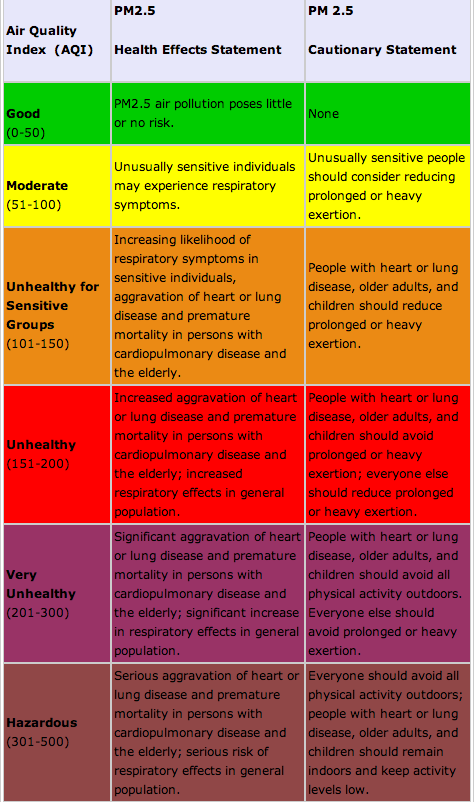
2. NISA (niisa – NISA(ニーサ))
A Japanese ISA! ‘Nippon Individual Savings Accounts’ are scheduled for launch in January 2014. It is based on the existing British ISA system to allow individuals to maintain a tax-free savings and investment account. Up to 1 million yen can be deposited each year, remaining tax-free for up to 5 years. Source.
3. Mum, Help Me! Fraud (kaasan tasukete sagi – 母さん助けて詐欺)
Like the ore ore fraud scams of yesteryear, these latest scams involve calling up relatives (especially targeted at older generations) claiming to be in trouble and requesting immediate transfer of money to solve the problem. (Source)
4. Bullet Climbs (dangan tozan – 弾丸登山)
Busy mountain climbers seeking a weekend thrill. I’ve done this in the past myself without knowing the word for it. I found myself at the foot of Mt. Fuji one day after the trains broke down. Being the outdoor kind of guy I am, I was already wearing suitable trekking shoes, carrying a torch and camera, so all I needed was a lightweight jacket. I grabbed one at the store and took the bus up to the 5th station, where I climbed Mt. Fuji through the night, saw the sunrise and then jogged back down the loose gravel of the mountainside in time for brunch. A true ‘speed run’ of Japan’s famous mountain, which is now a listed World Heritage Site. It is worthwhile to note that this sort of tourism is taking a toll on the natural environment however, and there are movements to have visitors to Japan’s monument limited in the future. (Source)
5. Beautiful Characters (bimoji – 美文字)
Calligraphy lovers rejoice! A recent boom in attractive handwriting has seen television shows featuring talents and celebrities putting their handwriting skills to the test to be graded by Nakatsuka Suito, a calligraphy designer. As a student of Japanese, I’ve always had a fascination in the inherent artistry of the Chinese characters. There really is a beauty to a well-formed, balanced character with the perfect weight to the strokes.
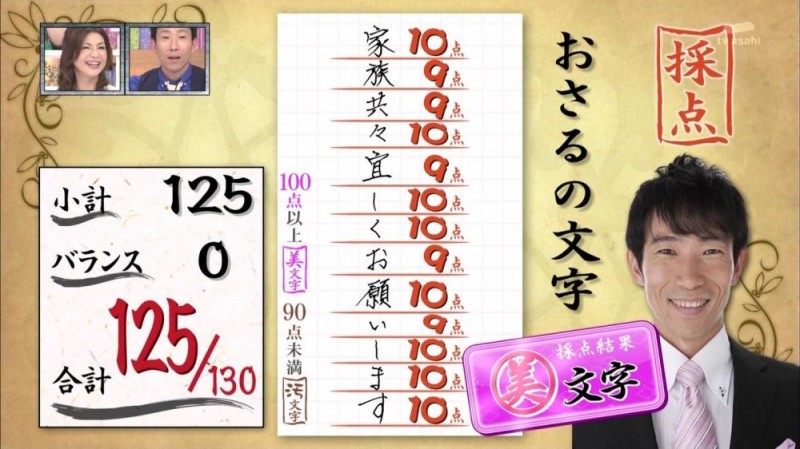
6. DJ Police (dii jei porisu – DJポリス)
The good-hearted policemen of Shibuya who guided delighted fans across Shibuya crossing after Japan qualified for the 2014 World Football Cup. ‘The police are your teammates! Please proceed in an orderly and safe manner to the station’. I’d like to see the police in Britain give this a try!
7. Seven Stars (nanatsu boshi – ななつ星)
The ‘Seven Stars’ is Japan’s first cruise train. It’s a luxury train that captured headlines this year and is run by JR Kyushu, traversing southern Japan. (Source)
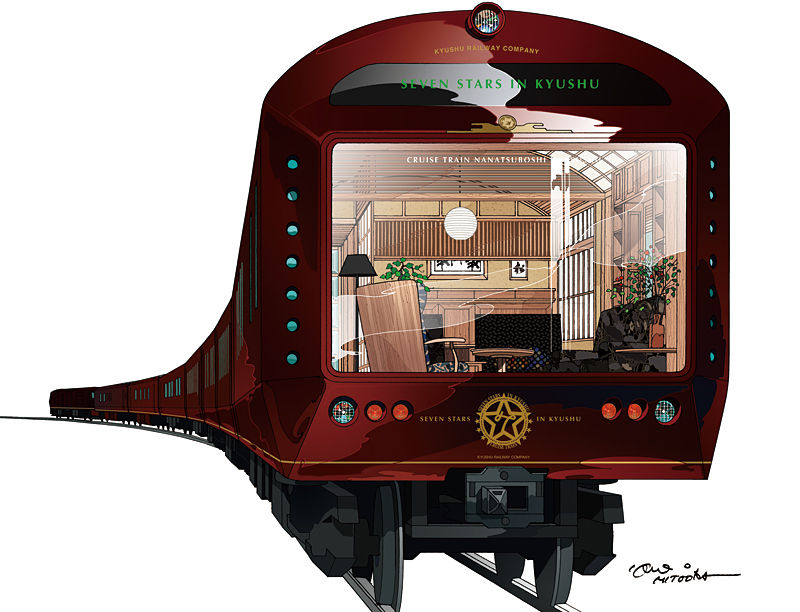
8. Puzzle & Dragons (pazudora – パズドラ)
A cross-breed of role-playing game and puzzle game that captured the smartphone gaming scene this year. As of April 2013, it was the the number one grossing app on both iOS and Android in the world, with a daily revenue in the millions of dollars, despite only being marketed in Japan. (Source)
9. Big Data (biggu deeta – ビッグデータ)
Big Data – a business buzzword, or perhaps even a movement that has companies worldwide looking to capitalise on the idea. Big Data is literally very large sets of data that cannot be measured using traditional tools, but which yield a wealth of information leading to better decision making when properly managed, analysed and visualised. (Source) (Source)
10. SNEP (suneppu – SNEP(スネップ))
The acronym for ‘Solitary Non-Employed People’, which seems to be an amalgamation of previous buzzwords like NEET (Not in Employment, Education or Training) and Hikikomori (socially withdrawn individuals). (Source) (Source)
11. Hate Speech (heito supiichi – ヘイトスピーチ)
Hate speech, such as that directed towards Koreans resident in Japan. Demos in the Korean Town of Shin-Okubo have been particularly nasty, with physical and verbal threats such as ‘Die!’ or ‘Go Home!’ directed towards Koreans and people who are seen as supporting Korea or the popular culture. In response to these racist actions, there have also been demos criticising the hate speech. (Source)
12. The Enlightened Generation (satori sedai – さとり世代)
Named so for their avoidance of extravagance and luxuries. Generally thought of as children born in the mid-80s who received ‘Yutori education’ (a reduction in the amount of hours spent on compulsory curriculum in primary school). They avoid brands and cars, have few desires, little interest in love or overseas travel and are content to spend their free time at home or with a small circle of friends who hold similar ideals. They reduce and avoid wasting, but are not averse to splashing out on theirs hobbies. (Kotobank)
13. Dark Tourism (daaku tsuarizumu – ダークツーリズム)
Also known as ‘black tourism‘ or ‘grief tourism’ where individuals visit locations that were the subject of disasters, calamities or atrocities. Sites include Chernobyl, Auschwitz, ‘Ground Zero’ in New York City and even potentially Fukushima. As an explorer of haikyo (ruins) and other ‘dark’ places such as the Paris Catacombs, this buzzword was a particularly interesting one for me to research.

14. Locally-Produced Power (gotouchi denryoku – ご当地電力)
A movement towards local production and renewable sources of power in response to the Great East Japan Earthquake and rapid de-nuclearisation of Japan which left a power hole to be filled. (Source)
15. Local Characters (gotouchi kyara – ご当地キャラ)
Also known as ‘Regional Mascots’ or ゆるキャラ – ‘Yuru Characters’ – for their tendency to be slightly quirky and spaced-out. These city and town mascots entertain visitors and adorn regional merchandise, attracting people from afar to visit lesser-known rural regions of Japan. My previous hometown in Japan, Okazaki, where I worked as a CIR for 3 years on the JET programme brought in its own local mascot just after I left for Tokyo. Okazaemon is now rather famous, taking second place in the national Yuru-Kyara competitions and I witnessed a transformation of the local goods when visiting friends in Okazaki recently. It seems the netizens have really taken to his creepily-cute nature, so much so that a female counterpart, Okazaennu, was created for Higashi-Miyoshi Town in Tokushima Prefecture.
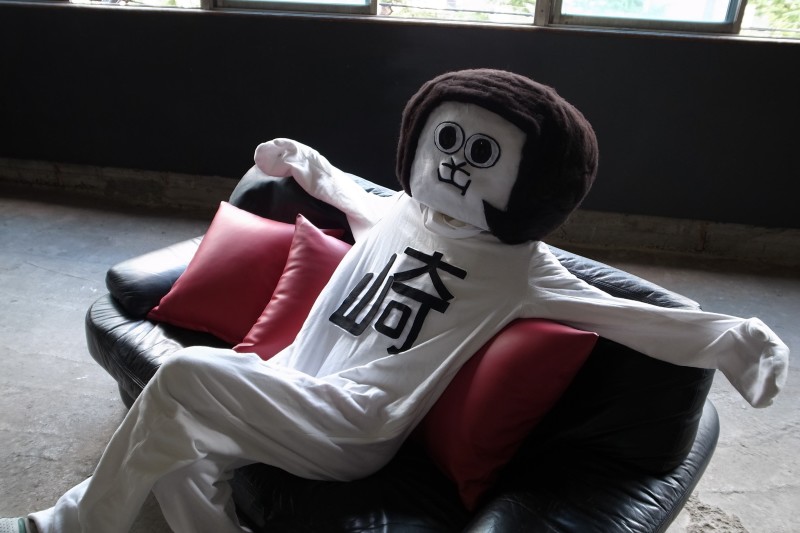
Video below:
And heck, one more won’t harm:
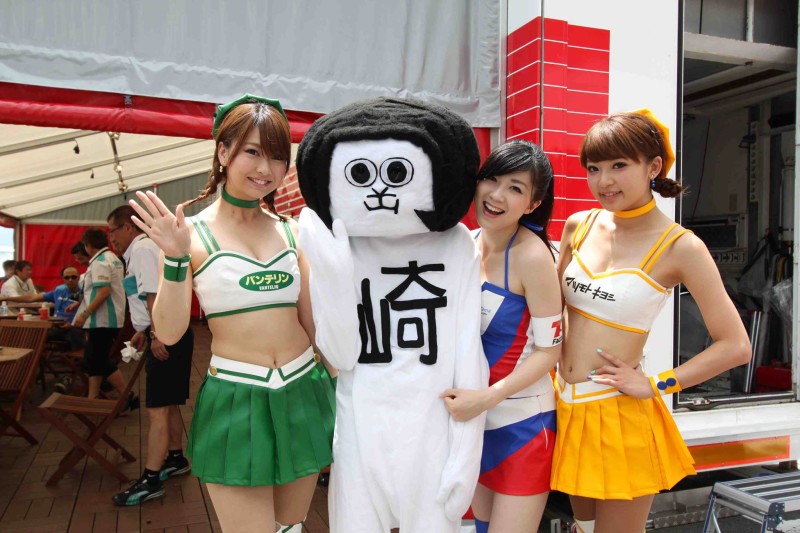
16. Screw-up Girls (kojirase joshi – こじらせ女子)
Originating from the book Joshi wo Kojirasete by Amamiya Mami, this buzzword describes girls who are estranged from the latest fashion trends and fail in love and relationships. こじらせる means to ‘complicate matters’ or ‘make things worse’. (Source) (Source)
17. Mount Fuji (fujisan – 富士山)
At 3,776 metres, Mount Fuji is Japan’s highest peak and can get incredibly busy in the small summer opening that makes it safe to climb. This year it finally achieved World Heritage status as a cultural site, further increasing its popularity and the amount of visitors. There’s no mistake though, it has a serene natural beauty.
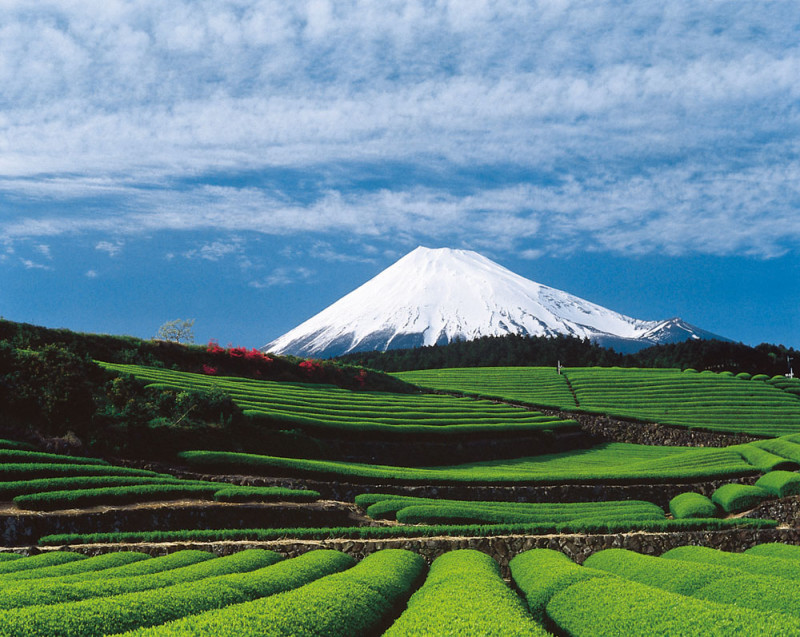
18. Parasol Boys (higasa danshi – 日傘男子)
I was surprised at the existence of the sun-umbrella when I first came to Japan, and although I haven’t personally seen one of these guys up close, apparently protecting one’s delicate, pasty complexion from the sun is no longer a ladies-only pastime. Note: Thanks to commenters for pointing out that my initial translation of ‘sun-umbrella’ was more aptly depicted by the word ‘parasol’ or ‘sunshade’. For me growing up in the UK, a parasol was always a large umbrella used over a table at garden parties and the beach, so it didn’t even cross my mind when thinking of a translation for 日傘. Thanks guys! (Source)
19. Twit-ter (bakattaa – バカッター)
Fool + Twitter = Twit-ter. (Thanks to Reddit user Goluxas for the translation suggestion!) Specifically, this word refers to Twitter as being a tool for finding fools who tweet about their mischief (and occasionally crimes!). This year young people have increasingly been taking mischievous pictures of themselves performing pranks, the most prevalent of which comes to mind is the new fad of freezering oneself. When the clerks aren’t looking, jump into the ice cream cabinet and have a mate snap your picture. Put it on Twitter and show the whole world your accomplishment. (Source)
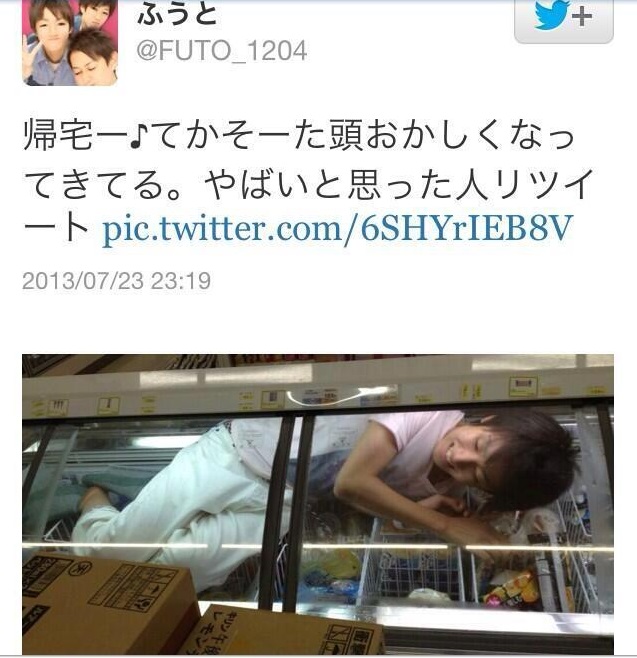
20. Mega-Angry *Puffs Cheeks* (geki oko pun pun maru – 激おこぷんぷん丸)
Derived from the Gyaru word ‘oko’, a shortened form of the word 怒る – ‘to be angry’ in Japanese. This corruption adds ‘geki’ emphasising the anger, followed by ‘pun pun’, a mimetic word which verbalises a puffing out of one’s cheeks (a cute gesture for anger in Japan). Finally we have ‘maru’ at the end, either meaning ’round’, or used as the suffix sometimes attached to the end of boy’s names. ٩(๑`^´๑)۶ (Source)

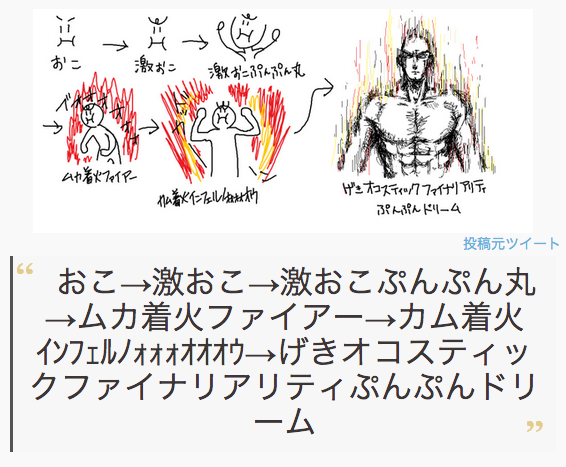
21. Troubled-Face Makeup (komari-gao meiku – 困り顔メイク)
Makeup applied in such as way as to make a young woman’s face reminiscent of ‘damsel-in-distress’. Seems to have caught the attention of legions of Otaku fans when AKB member Haruka Shimazaki was featured in the girl’s fashion magazine CanCam showing how to acheive the look. (Source)
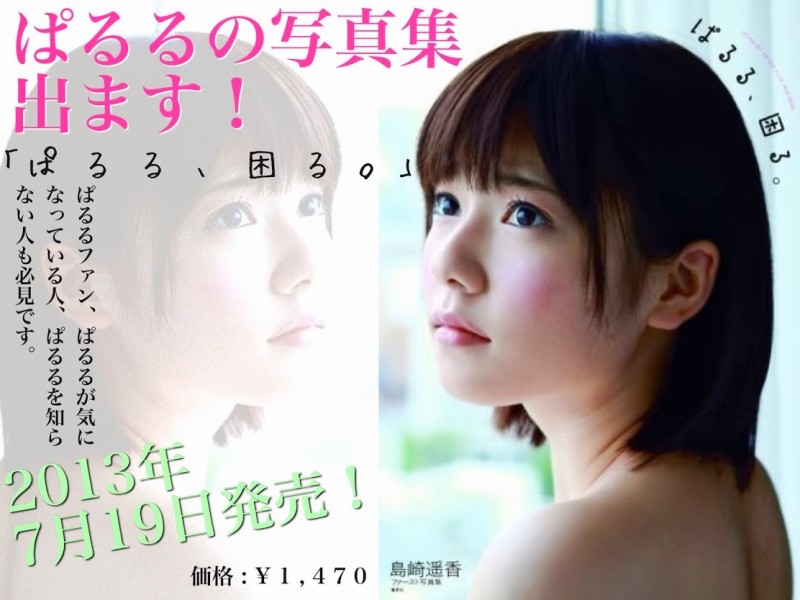
22. Tear-Bags Makeup (namida bukuro meiku – 涙袋メイク)
Another fashion-inspired buzzword, again keeping with the innocent-and-defenceless sex appeal theme. This time makeup is applied to make it appear as though you’ve recently been crying and have slightly puffy eyes. I can see this catching on with those sun umbrella boys. (Source)
23. Double Payback (baigaeshi – 倍返し)
A line that became famous after the character Hanzawa Naoki uttered it in a drama of the same name. The video below shows it at the end of the clip.
24. Now, right? (ima desho – 今でしょ)
The answer to a self-posed question from university exam prep-school teacher Hayashi Osamu.
“When are you going to do it..?”
“Now, right?”
The catchphrase proved popular enough to see him using it for commercials too.
25. Giant Squid (daiouika – ダイオウイカ)
Another favourite of mine this year as I have a penchant for bioluminescence. Not long after the new year, bioluminescence fanatic Edith Widder and two other scientists took a deep sea submersible to the depths of the ocean, at 630 metres below the ocean’s surface near the Ogasawara Islands, south of Tokyo, Japan. The rare footage recorded was incredibly vivid HD video and captured this aquatic beast in its natural habitat.

Using red light (which cannot be seen by most deep sea creatures), the team was able to manoeuvre the submersible without alerting nearby creatures. In order to attract the deep sea giant squid, the team used an optical luring technique – the electronic jellyfish.

Based on the bioluminescent ‘scream’ of the Atolla jellyfish, a similar pattern was created using blue light. This would mimic the jellyfish’s cry for help, attracting the giant squid in what it would think a larger predator – food for the squid. See 5 minutes into the TED Talk video for the magical moment.
26. Jejeje (jejeje – じぇじぇじぇ)
An expression of surprise in the Iwate dialect. This buzzword comes from the popularity of the NHK drama ‘Ama-Chan’, meaning ‘Little Diver’.
27. Ama-chan Loss (amarosu – あまロス)
The Japanese is short for あまロス症候群 or PASD in English. That is ‘Post Ama-chan Stress Disorder’, expressing the sense of loss and disappointment when the drama reach its conclusion. Given that both the drama and a word lamenting its loss are in this year’s rankings, it might just be worth making time to view this one! (Source)
28. Big Daddy (biggu dadi – ビッグダディ)
‘Big Daddy’ is the nickname of Kiyoshi Hayashishita, a father currently raising 8 lively children on the ‘small-bean’ island of Shodoshima. The television documentary which follows his life is called ‘Tsuukai! Biggu Dadi!’ – roughly, ‘Big Daddy! What a Thrill!’ and has aired since 2006 (although not on a regular basis). His success is in part due to his association with his ex-wife Minako (see the next buzzword). (Source)
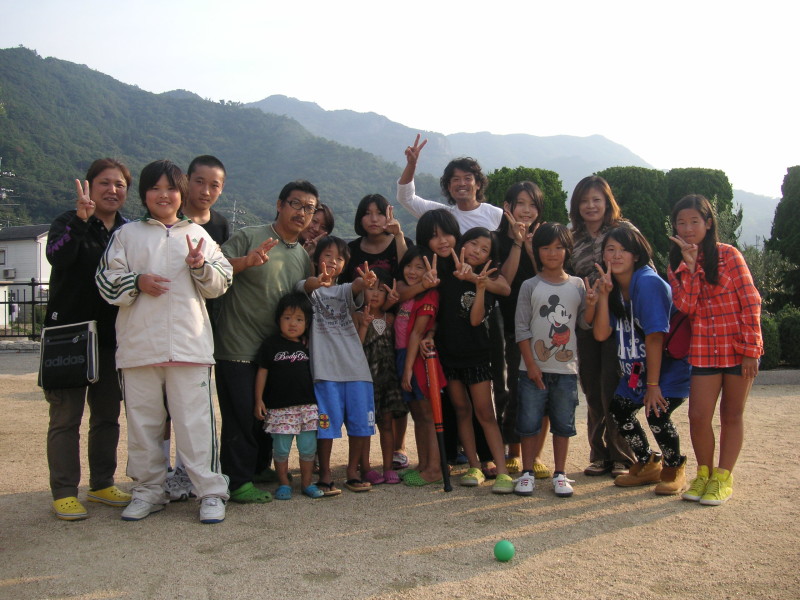
29. Minako Undressed (hadaka no minako – ハダカの美奈子)
The actual English title of this film as shown in the promotional video is ‘Undressed MINAKO’, which sounds odd, so I’ve corrected the word order. Minako is an ex-wife of Big Daddy and this film depicts her life and upbringing. The title choice is no accident: Minako rose to fame through the full nude photoshoot she performed. She currently has a book and the soon to be released film.
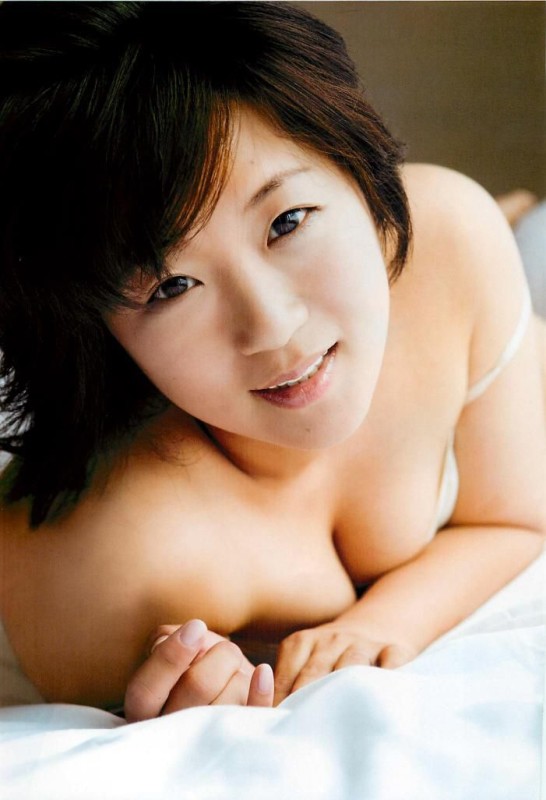
30. Funasshii (funasshii – ふなっしー)
Funasshii is a giant pear. Funasshii is also the winner of the 2013 ‘Regional Mascot General Election’, so can claim the title of ‘Japan’s No.1 Mascot’. He unofficially represents the city of Funabashi in Chiba Prefecture. ‘Unofficially’ because there is another official mascot for the town which didn’t quite cut it.
I love the photo below. You can see a dejected Okazaemon looking on longingly in second place. (Source)
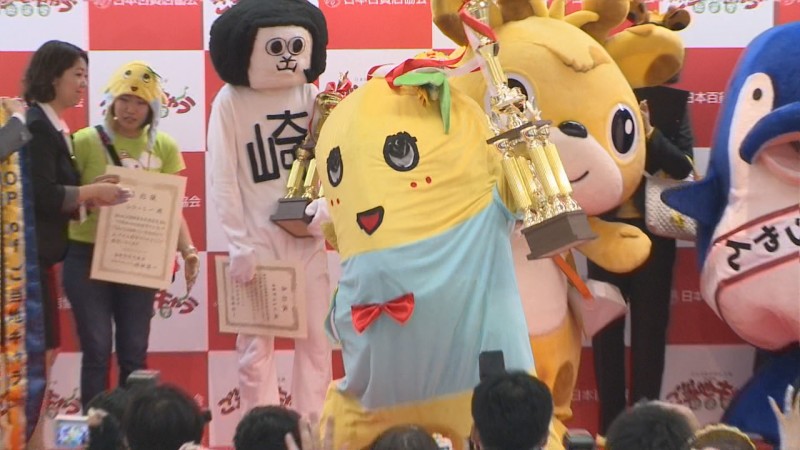
31. Flying Get (furaingu getto – フライングゲット)
Engrish with the meaning ‘to get hold of a product before its official release date’. A song by the same name was released by the idol group AKB48 in 2011, but it was comedian Kintaro and her AKB48 parody that is behind the word’s inclusion in this year’s list.
32. My Number (mai nanbaa – マイナンバー)
A unique number assigned to each member of society, to be used for taxation, pension, social insurance and benefits. The number system will come into effect for January 2016, but the National Diet passed the law in May 2013. (Source)
33. NSC (enu esu shi – NSC)
NSC, standing for ‘National Security Council’. Prime Minister Abe is moving to have a security council established in Japan. (Source)
34. Abenomics (abenomikusu – アベノミクス)
This portmanteau has been repeatedly picked up throughout the year in both the western press and Japan. Although I have my doubts it will win over more popular terms popularised through television and consumer media, this is clearly a runner for the word of the year. Succinctly, Abenomics refers to the economic polices of Prime Minister Shinzo Abe, intended to revitalise Japan’s economy following years of deflation and the global recession by quantitive easing, fiscal stimulus and structural reform – the ‘three arrows’. (Source)
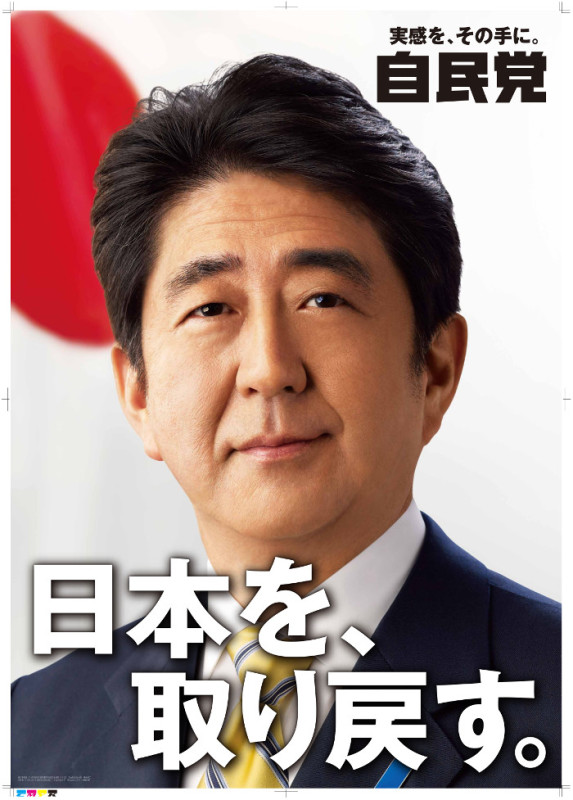
35. The Three Arrows (sanbon no ya – 3本の矢)
The three arrows of Abenomics include measures such as raising the targeted inflation rate to 2%, reversing the appreciating value of the yen, quantitive easing, increasing spending on public infrastructure, and growth strategies to encourage private investment. (Source) (Source)
36. The Right to Collective Self Defense (shudanteki jieiken – 集団的自衛権)
Referring to Japan’s legal right to defend its country, people and allies in the event of an attack. Article 9 of Japan’s Constitution, drafted in the aftermath of WWII, prohibits this by not allowing Japan to maintain a military force. In its place, the Japanese Self Defense force was established and participates in peace-keeping operations. However, the current government wishes to revise Article 9 to increase the power the JSF can wield, which has been met with both praise and condemnation. (Source)
37. Specified Secrets (tokuteihimitsu – 特定秘密)
Classified information that is prohibited from public release. The Abe Cabinet is pushing to have this bill passed to protect national security. It would give the government power to withhold information from the public that it deems classified, as well as condoning punishments for whistleblowers. The vague nature of the bill has been met with criticism. (Source)
38. Polluted Water (osensui – 汚染水)
The contaminated water being stored at Fukushima Daiichi Nuclear Power Station. The plant and the company in charge, TEPCO, have been subject to repeated criticism for leaks and other accidents resulting in further contamination of the surrounding environment. (Source)
39. Black Corporations (burakku kigyou – ブラック企業)
A notable word that I’ve heard in past years. Black corporations and companies are those that abuse employer-employee relationships through a variety of means, such as unpaid overtime, low salary, oppressive company policies and measures to prevent employees from speaking out. Although it can be easy to imagine aggressive bosses and beligerant methods, many companies employ passive-aggressive approaches and indirect methods to control their employees. The oft-uttered ‘it’s for the sake of the company’ springs to mind when questioned on any unfair company practices. Hence, young jobseekers and existing employees are increasingly evaluating companies on the feedback of others, which has become especially easy to do in the age of the internet. (Source)
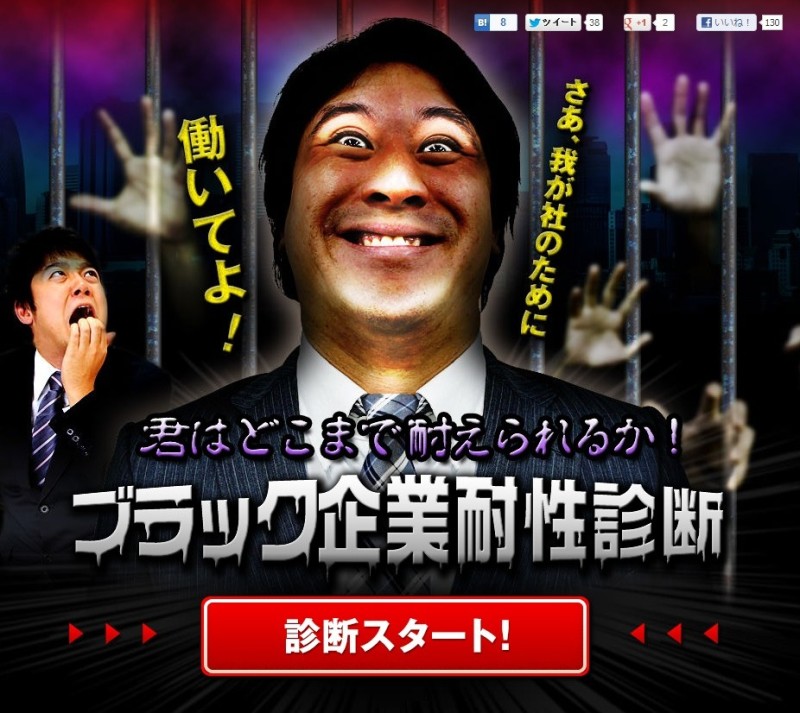
40. Limited Regular Employee (genteishain – 限定正社員)
In between regular ‘full-time’ employees and non-regular employees, in comes the proposal from the Abe government for the ‘limited regular employee’. The prime difference is that it is easier to let this new type of employee go if there ceases to be work for them to do. Depending on your position and skills, this could easier mean more job security or less. I’m a proponent of any measure that gets people to stay sharp and out of the mindset of ‘job-for-life’. (Source)
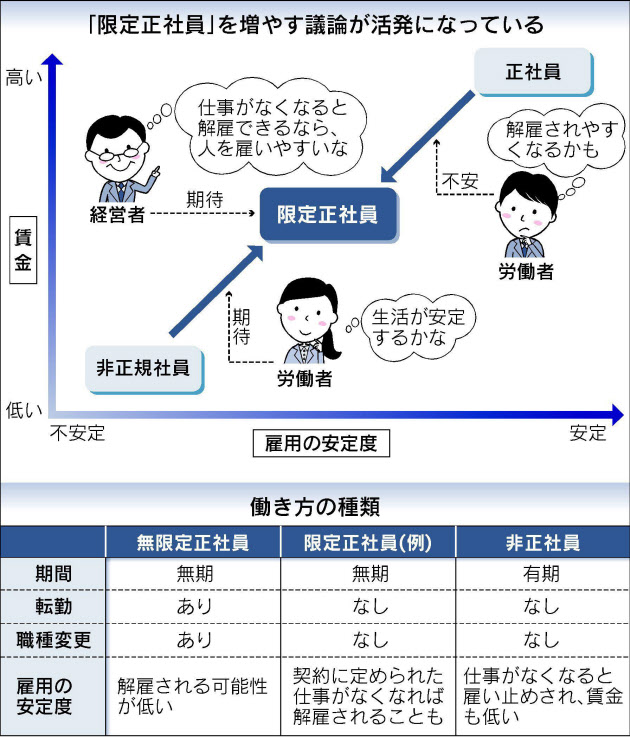
41. The Purging Room (oidashibeya – 追い出し部屋)
A room (figurative but also literal in many cases) in a company that unproductive or ‘problem’ employees are sent to in order to spend the rest of their days performing dull and repetitive tasks in the hope that they will quit of their own accord. The once popular social networking platform Mixi is currently under fire after heavy losses for actions that seem push employees to quit. (Source)
42. If We Learn from the Methods of the Nazis (nachisu no teguchi ni manandara – ナチスの手口に学んだら)
A speech on 29th July during which fiscal minister Taro Aso suggested Japan could learn from the methods of the Nazis, noting how the Weimar Constitution was changed without being widely noticed and the Nazis took power. He mentions afterwards that he has no intention of denouncing democracy, but his words were very poorly chosen. Aso has on numerous occasions made controversial remarks that stir up the opposition and the press, with his true intention often being mis-interpreted or lost in the resulting commotion. (Source)
43. Internet Elections (netto senkyo – ネット選挙)
The first election took place this year in Japan where candidates from the House of Councillors were legally allowed to use the internet as a tool for self promotion. It had been prohibited until 19th April 2013 when the law was changed. I am all for this revision if it means they get the PR vans and their blaring megaphones off the streets of Japan’s neighbourhoods. (Source)
44. Ahonomics (ahonomikusu – アホノミクス)
A clever corruption of Abenomics. Aho means ‘fool’ or ‘idiot’ in Japanese, so opponents of Abe’s bold changes take great pleasure in tarnishing his buzzword with one of their own. Particularly prevalent is the long face of purple-haired skeptic Noriko Hama. (Source)
45. Hold Back, You Lose (hiitara make – 引いたら負け)
Pitcher Tanaka Masahiro from the victorious Tohoku Rakuten Golden Eagles expressed this sentiment during an interview after winning the Pacific League on 26th September. (Source)
46. Wield Two Swords (nitouryuu – 二刀流)
Used in baseball to refer to a player who can perform as both a pitcher and fielder. Shouhei Ootani from the Hokkaido Nippon Ham Fighters proved he could do both this year. (Source)
47. Deep Strength of Sports (supootsu no sokojikara – スポーツの底力)
Harking back to 2011’s buzzword, this time not just baseball but all sports have the potential to inspire and energise people. (Source) (Source)
48. Shirai (shirai – シライ)
17-year-old Kenzo Shirai. He is a gymnast who has won a gold medal at the World Artistic Gymnastics Championships and already has gymnastic techniques attributed to his name, such as his quadruple twist. (Source) (Source)
49. Omotenashi (om-mo-te-na-shi – お・も・て・な・し)
O-mo-te-na-shi is the word ‘omotenashi‘ uttered as individual syllables, used as a linguistic device to emphasise the meaning of the word. Omotenashi is used to describe the spirit of hospitality, usually in reference to Japanese hospitality. The underlying concept expressed in the word is that of warmth and altruism – hospitality performed without wanting something return. Like the concept of omoiyari (consideration of others), omotenashi anticipates the needs of the guest, and the host performs the appropriate act without needing to be asked directly.
The reason for its inclusion in the list is due to the presentation by Christel Takigawa at the International Olympic Committee session after Tokyo was announced as the host city for the 2020 Olympics.
50. Under Control (contorooru sareteiru – コントロールされている)
The words uttered by Prime Minister Shizo Abe when asked by the International Olympic Committee about the safety of Tokyo and Japan in the presence of the ongoing trouble at Fukushima Daiichi Nuclear Power Plant. (Source)
**********
What words do you think will be picked for the top 10 this year? What word will win?
A look at this year’s words by Durf: Nippon.com









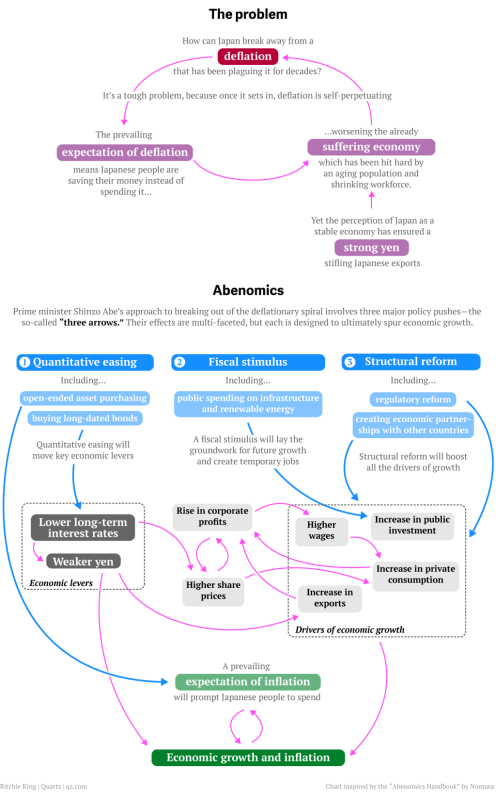
I look forward to your list every year, great read.
small typo in 38: stores => stored
Cheers!
Nice job on the list. I beat you to the punch by posting this one on the day when they were announced, but if I hadn’t been scrambling to get the piece up that same day I would have gone looking for more Youtube videos and the like, as you did. :-)
P.S. The 丸 in the geki-oko one strikes me more as the 丸 that gets appended to boys’ names in the olden days (牛若丸 and the like) or perhaps vessel names, so more like “All aboard the S.S. Super Angry Grrrr!”
Interesting. I’ll have to look that one up. I do like the nautical idea though! I wonder if the word’s creator can be found…
Hey Peter. Nice job! Amazing you managed to get all that done on the day the words were announced. I must have ploughed more than 10 hours into this post in research, reading and writing. I don’t own a television so there was a lot to learn and catch up on… I’d add the Nippon.com list as a link for further reading.
I hope you realise that NISA is also the Nuclear and Industrial Safety Agency, which must have received a huge number of mentions on the web, and may have skewed your figures.
http://ja.wikipedia.org/wiki/原子力安全・保安院
As for 日傘, isn’t “parasol” just the word you need? (-
SPV
NISA is indeed the Nuclear and Industrial Safety Agency. ニーサ, as specified in the post and the original source, is Nippon Individual Savings Account. It is a little odd has NISA (the agency) is not in the list of words though.
Good call on parasol!
日傘男子 is not “(t)echnically ‘Sun-Umbrella-Boys’”. 日傘 is the Japanese word for parasol/sunshade. It’s best to avoid over-translation of the kanji in jukugo like these.
Hey Jim. Thanks for stopping by. I’ve been a long-time user of the online dictionary and text-glossing tool on your website :).
I’ve never in my life used the word ‘parasol’ to describe an umbrella that is carried by a person of any regular size and strength though. To me growing up in the UK, a parasol was always a large umbrella that went over a table of some sort, or used on a beach. Certainly not an object that one would carry around, but I can see it would be a more fitting translation for this usage. Thanks for the tip!
To me “parasol” is a small light umbrella used in the old days by females as a sunshade. I see Wordnet has “a handheld collapsible source of shade”.
ditto
https://www.pinterest.com/briandykstra/mid-19th-century-parasols/
SPV
“I’ve never in my life ….”
Ah, you must have grown up in a deprived area. Poor lad! :-D
On second thoughts, maybe they don’t have sunshine where you come from.
Didn’t you know? The UK is famous for its grotty weather!
Born and bred on the Surrey/Hants border. But I travelled the world in books. :-D
I have to admit, I loled on the “fool” buzzword… something about a picture of a Japanese guy squished into an ice cream freezer, smiling like an idiot, struck me as hilarious.
Yeah, it was hilarious until the guy’s dad lost his convenience store franchise (he took the photo in the ice cream freezer in his dad’s store) when the company found out about the prank.
Yea, these pranks have caused more than a few problems. It doesn’t seem to stop the younger generations from messing around though unfortunately :(.
Although I don’t think it in any way excuses the acts, mischief is part of growing up, and I would imagine most if not all of us have at some time done some rather stupid things for fun.
日傘男子=>parasol boys?
Yup, changed!